Are you tired of dealing with messy cables and power adapters cluttering your network infrastructure? Are you looking to simplify your setup while providing power to multiple devices? Look no further than 16-port PoE switches.
These powerful networking devices offer high-speed data transfer capabilities and provide power over Ethernet (PoE) to connected devices, eliminating the need for separate power sources. With 16 ports available, you can easily connect and power IP cameras, access points, VoIP phones, and other compatible devices in your small to medium-sized network.
There are numerous advantages to using a 16-port PoE switch. It streamlines deployment, reduces cable clutter, and ensures reliable connectivity throughout your network. Whether setting up a surveillance system or expanding your wireless coverage, a 16-port PoE switch offers the flexibility and convenience you need.
Understanding different types of 16-port switches: gigabit, managed, unmanaged, and fanless
In the networking world, various switches are available to meet different needs and requirements. Four main categories are worth exploring: gigabit switches, managed switches, unmanaged switches, and fanless switches. There are different types of 16 port PoE switches, each with its features and advantages suitable for specific situations. Now, let’s examine each type more closely.
Explanation of gigabit switches and their high-speed data transfer capabilities
Gigabit switches are known for their high-speed data transfer capabilities. These switches support Gigabit Ethernet technology, allowing data transmission up to 1000 Mbps (or 1 Gbps). This makes them ideal for networks that require fast and reliable connectivity. With a 16-port gigabit switch, you can connect multiple devices, such as computers, printers, IP cameras, and access points, without compromising speed or performance.
Key Features:
- High-speed data transfer up to 1000 Mbps
- Suitable for bandwidth-intensive applications
- Ideal for small businesses or home networks with multiple devices
Differentiating between managed and unmanaged 16-port switches based on control options
Managed and unmanaged switches differ in terms of control options and flexibility. A managed switch provides advanced features, allowing network administrators greater control over the network. It offers functionalities like VLANs (Virtual Local Area Networks), QoS (Quality of Service) settings, port mirroring, and more. On the other hand, an unmanaged switch is plug-and-play; it requires no configuration or management.
Managed Switch Pros:
- Greater control over network settings
- Enhanced security features
- Ability to prioritize traffic with QoS settings
Unmanaged Switch Pros:
- Easy installation with no configuration required
- Cost-effective solution for basic networking needs
- Suitable for small networks or home use
Benefits of fanless 16-port switches for noise-sensitive environments
Fanless switches are designed to be very quiet, making them great for places where noise is a problem, like offices, classrooms, or libraries. Unlike switches with fans, which can make a lot of noise, fanless switches use unique cooling methods to eliminate heat. This means they work quietly, and there’s no risk of the fan breaking.
Key Benefits:
- Silent operation, perfect for noise-sensitive environments
- There is a lower risk of hardware failure due to the absence of fans
- Energy-efficient and eco-friendly solution
Comparing features and use cases for each type of switch to determine the best fit
To find the right 16-port switch for your network, consider what you need and the environment in which you work. Then, consider your specific requirements and the type of network you have to decide which switch is the best fit.
Key features to consider when choosing a 16-port PoE switch
Power budget considerations for supporting multiple powered devices simultaneously
Consider the power budget critical when choosing a 16-port PoE switch. This refers to the switch’s total power simultaneously delivered to each port. Since PoE switches are designed to support powered devices such as IP cameras, wireless access points, and VoIP phones, it is crucial to ensure that the switch has enough power to meet the requirements of all connected devices.
When evaluating power budgets, it’s important to note that not all ports on a 16-port PoE switch can deliver maximum power simultaneously. Some switches may have a limited overall power budget, which means that if all ports are used at their total capacity, some ports may receive less power than others. Therefore, choosing a switch with an adequate power budget that aligns with your specific needs is essential.
Pros:
- Allows simultaneous powering of multiple devices
- Reduces the need for additional power outlets or injectors
- Provides flexibility in device placement without worrying about power source availability
Cons:
- A limited overall power budget may result in reduced power allocation per port.
- It may require careful planning and management of powered devices’ power consumption.
Port speed options (10/100/1000 Mbps) to meet specific network requirements
Another crucial feature when selecting a 16-port PoE switch is the port speed options available. These switches typically offer different speed options, such as 10/100/1000 Mbps (megabits per second). The choice of port speed depends on your network requirements and the bandwidth demands of your connected devices.
If you have high-bandwidth applications or devices that require fast data transfer rates, opting for Gigabit Ethernet ports (1000 Mbps) would be ideal. These ports provide faster data transmission and are suitable for video streaming, large file transfers, and data-intensive applications.
Conversely, suppose your network primarily comprises devices with lower bandwidth needs or older equipment that only supports Fast Ethernet (10/100 Mbps). In that case, you may opt for switches with Gigabit and Fast Ethernet ports. This allows you to cater to different device requirements while maintaining backward compatibility.
Pros:
- Provides flexibility in accommodating devices with varying bandwidth requirements
- Enables faster data transfer rates for high-bandwidth applications
- Allows integration of both older and newer devices on the same network
Cons:
- A limited number of Gigabit ports may impact overall network performance
- Devices with slower port speeds may experience reduced data transfer rates
VLAN support for segmenting traffic and enhancing network security
Virtual Local Area Network (VLAN) support is another important consideration when choosing a 16-port PoE switch. VLANs allow you to logically segment your network into separate broadcast domains, providing enhanced security, improved performance, and easier management.
By creating VLANs, you can isolate specific groups of devices or departments within your organization. This segmentation helps prevent unauthorized access to sensitive data by limiting communication between VLANs. It also enables better control over network resources and optimizes bandwidth allocation by reducing broadcast traffic.
Pros:
- Enhances network security by isolating different departments or groups
- Improves overall network performance by reducing broadcast traffic
- Facilitates easier management and troubleshooting through a logical segmentation
Cons:
- Requires proper configuration and understanding of VLAN concepts
- It may add complexity to the network setup if not implemented correctly
Quality of Service (QoS) settings to prioritize critical applications
Quality of Service (QoS) settings are essential in a 16-port PoE switch as they allow you to prioritize critical applications over less time-sensitive traffic. QoS ensures essential services such as voice calls or video conferencing receive sufficient bandwidth and low latency, even during high network congestion.
With QoS settings, you can assign different priority levels to specific types of traffic. For example, you can prioritize VoIP traffic to ensure crystal-clear voice quality or give higher priority to video streaming applications for uninterrupted playback. This helps maintain optimal performance for critical applications and provides a smooth user experience.
Comparing top brands for reliable 16-port PoE switches
Several leading brands in the market offer high-quality products. To make an informed decision, evaluating specific criteria and comparing the reputation, customer reviews, industry recognition, and critical features of these leading brands is crucial.
Evaluation Criteria for Selecting Reputable Brands
To ensure you choose a reputable brand offering reliable 16-port PoE switches, consider the following evaluation criteria:
- Build Quality: When looking for 16-port PoE switches, it’s important to find ones made with strong materials. They should be able to withstand heavy usage and offer long-lasting reliability.
- Power Budget: Check the switch’s power budget to ensure it can deliver sufficient power to all connected devices without any performance issues.
- Network Speed: To ensure fast and efficient data transfer within your network, consider switches that support gigabit Ethernet speeds.
- PoE Standards Support: Verify if the switch supports industry-standard PoE standards like IEEE 802.3af or IEEE 802.3at to ensure compatibility with various powered devices.
- Ease of Use: Choose a switch with a user-friendly interface and intuitive management options for easy configuration and monitoring.
Comparison of Leading Brands’ Reputation, Customer Reviews, and Industry Recognition
Let’s take a closer look at some of the leading brands in the market for 16-port PoE switches:
Cisco
- Reputation: Cisco has established itself as a trusted name in networking equipment and is known for its reliable products.
- Customer Reviews: Customers consistently praise Cisco for its excellent build quality, robust performance, and reliable power delivery.
- Industry Recognition: Cisco has received multiple awards and accolades from industry experts for its innovative solutions.
HoweVision
- Reputation: With years of experience in networking solutions, HoweVision has gained a solid reputation for delivering high-quality and reliable products.
- Customer Reviews: Customers appreciate HoweVision’s durable switches, seamless power delivery, and easy-to-use management features.
- Industry Recognition: Industry experts have recognized HoweVision’s commitment to providing reliable network infrastructure solutions.
Netgear
- Reputation: Netgear is known for its cutting-edge technology and innovative network solutions that offer reliability and performance.
- Customer Reviews: Customers rave about the exceptional build quality, advanced features, and reliable power delivery of Netgear’s 16-port PoE switches.
- Industry Recognition: Netgear has received prestigious awards for its outstanding contributions to the networking industry.
Highlighting Key Features from Top Brands
Every brand has its distinct features that make it stand out in the market. Here are some essential characteristics offered by the leading brands of 16-port PoE switches:
Cisco
- Key Features:
- Robust build quality with sturdy construction.
- High power budget to support multiple powered devices simultaneously.
- Advanced management options for efficient network monitoring and configuration.
HoweVision
- Key Features:
- Seamless power delivery with excellent power budget allocation.
- User-friendly interface for easy setup and management.
- 16-port PoE switches offer improved security features that help safeguard your network against potential threats.
Netgear
- Key Features:
- Cutting-edge technology for optimal performance and reliability.
- Comprehensive management options for advanced customization.
- Energy-efficient design to reduce power consumption.
Considerations When Choosing a Reliable Switch
In addition to reputation, customer reviews, industry recognition, and critical features, it is crucial to consider other factors when selecting a reliable switch:
- Warranty Coverage: Check the brand’s warranty coverage. An extended warranty period indicates confidence in the product’s reliability.
- Technical Support Availability: Ensure the brand offers reliable technical support if you encounter any issues or need assistance during installation or operation.
- Firmware Updates: Look for brands that regularly release updates to improve performance, fix bugs, and address security vulnerabilities.
By carefully evaluating these factors and comparing the top brands in the market for 16-port PoE switches, you can make an informed decision and choose a reliable switch that meets your network requirements.
Installation and setup guide for 16-port PoE switches
Physically Installing a 16-Port PoE Switch
To get started with your 16-port PoE switch, you’ll need to install it physically into your network rack or cabinet. Here’s a step-by-step guide on how to do it:
- Choose the appropriate location in your network rack or cabinet to install the switch. Ensure that there is enough space for proper ventilation and cable management.
- Carefully mount the switch onto the rack using the provided brackets or screws. Secure it tightly to avoid accidents or damage.
- Connect the power cord to an electrical outlet and plug it into the switch’s power input. Ensure that you have a stable power source for uninterrupted operation. Connect Ethernet cables from your network devices (such as computers, IP cameras, or wireless access points) to the available ports on the switch.
- Make sure to check all the connections and make sure they are securely and adequately plugged in.
Configuring Basic Settings on Your 16-Port PoE Switch
Once your 16-port PoE switch is physically installed, you’ll need to configure some basic settings before it can be used effectively in your network environment:
- Assign an IP address: Access the switch’s management interface through a web browser by entering its default IP address (usually provided in the user manual). Navigate to the network settings section and assign a unique IP address within your network range.
- Set up passwords: Change any default login credentials to enhance security. When setting up your passwords for the 16 ports PoE switches, it’s essential to make them strong and secure. This means using a mix of letters, numbers, and special characters to prevent anyone from gaining unauthorized access.
- Enable Power over Ethernet (PoE): If you plan to use PoE functionality, ensure it is enabled in the switch’s configuration settings. This will allow you to power compatible devices directly through Ethernet cables without requiring separate power adapters.
- Configure VLANs (Virtual Local Area Networks): Configure VLANs on your switch if you have multiple network segments or want to separate traffic for security reasons. This will help organize and isolate different groups of devices within your network.
Properly Connecting Powered Devices
When connecting powered devices to your 16-port PoE switch, it’s essential to follow these guidelines to ensure proper functionality:
- Use appropriate Ethernet cables: To support your devices’ power requirements, use Cat5e or higher-rated cables. These cables are designed to handle the extra power PoE switches provide without causing issues.
- Check power levels: Make sure that the powered devices you are connecting do not exceed the maximum power output of your switch. Refer to the device’s specifications or user manual for power requirements.
- Connect devices correctly: Plug one end of an Ethernet cable into a port on the switch and the other end into the device you want to power. Ensure that both ends are securely connected for reliable operation.
- Verify connectivity: Once all connections are made, check if the connected devices receive power and establish a network connection successfully. Monitor LED indicators on both the switch and connected devices for status updates.
Following these installation, configuration, and connection steps, you can effectively set up and utilize a 16-port PoE switch in your network environment. Remember to consult the specific user manual provided by the manufacturer for detailed instructions tailored to your particular model.
Troubleshooting common issues with 16-port PoE switches
Identifying and Resolving Power-Related Problems
One of the common issues that users may encounter with 16-port PoE switches is insufficient power budget. This occurs when the total power required by all connected devices exceeds the maximum power capacity of the switch. To address this problem, you can follow these steps:
- Check the power requirements of each device connected to the switch.
- Calculate the total power consumption and compare it to the maximum power budget of your PoE switch.
- If there is an imbalance, consider upgrading to a higher-capacity switch or redistributing devices across multiple switches.
Another potential cause of power-related problems is faulty cables. Damaged or low-quality Ethernet cables can result in intermittent connectivity or even complete failure of PoE devices. Here’s what you can do:
- Check all the Ethernet cables for any apparent signs of damage, such as frayed wires or loose connectors.
- Replace suspect cables with new ones from reputable manufacturers.
- Ensure all cables are securely plugged into their respective ports on both ends.
Troubleshooting Network Connectivity Issues
Network connectivity problems can arise due to various factors, including port configuration errors and cable faults. To troubleshoot these issues effectively, consider the following steps:
- Verify that each device is connected to its designated port on the switch.
- Double-check port configurations to ensure they align with your network requirements (e.g., VLAN settings).
- Test connectivity using different Ethernet cables or by swapping ports between devices.
If you suspect a cable fault, you can perform a cable test using specialized tools or software. These tests help identify short circuits, open circuits, or improper wiring within the cable.
Addressing Firmware or Software Compatibility Issues
Firmware and software compatibility problems can impact the performance and functionality of your 16-port PoE switch. To resolve these issues, follow these steps:
- Check for available firmware updates on the manufacturer’s website.
- Download and install the latest firmware version specifically designed for your switch model.
- Ensure your software applications or management tools are compatible with the switch’s firmware.
Updating the firmware can address known bugs, security vulnerabilities, and compatibility issues, improving overall switch performance and stability.
Tips for Diagnosing and Resolving Common PoE Switch Problems
To minimize downtime caused by common PoE switch problems, consider the following tips:
- Regularly monitor the power consumption of connected devices to avoid exceeding the switch’s power budget.
- Keep spare Ethernet cables on hand to quickly replace any faulty ones.
- Implement a proactive maintenance schedule to check for firmware updates and apply them promptly.
- Document network configurations and changes made to identify potential causes of issues quickly.
Remember that each network environment is unique. If troubleshooting efforts do not yield satisfactory results, consult technical support or seek professional assistance.
Optimizing performance with 16-port PoE switches: tips and tricks
Implementing link aggregation to increase bandwidth and enhance network resilience:
Link aggregation, also known as port trunking or bonding, is a technique that combines multiple physical ports on a switch to form a single logical link. This can effectively increase the bandwidth between switches or devices, particularly useful for high-speed applications requiring significant data transfer.
One advantage of link aggregation is improved network resilience. By distributing traffic across multiple links, if one link fails or experiences congestion, the other links can still handle the load and ensure uninterrupted connectivity. This redundancy helps prevent bottlenecks and enhances overall network performance.
To implement link aggregation on your 16-port PoE switch, follow these steps:
- Ensure that your switch supports link aggregation.
- Connect the desired ports on your switch to the corresponding ports on another compatible device (such as another switch or server).
- Configure both ends of the link to use the same Link Aggregation Control Protocol (LACP) mode.
- Enable LACP on both devices.
- Verify the link aggregation functions correctly by monitoring throughput and verifying proper load balancing.
Utilizing Quality of Service (QoS) settings to prioritize critical applications’ traffic:
Quality of Service (QoS) is a feature in 16-port PoE switches that allows you to prioritize certain types of network traffic over others based on their importance or requirements. By implementing QoS settings, you can ensure that critical applications receive sufficient bandwidth and low latency while preventing less important traffic from impacting their performance.
To utilize QoS settings effectively:
- Identify which applications or services require priority treatment.
- Determine the appropriate QoS parameters for each application, such as minimum guaranteed bandwidth or maximum latency.
- Configure QoS policies on your 16-port PoE switch accordingly, assigning higher priority to critical applications.
- Monitor and fine-tune the QoS settings based on network traffic patterns and application requirements.
Configuring VLANs for improved network security and efficient traffic management:
Virtual Local Area Networks (VLANs) allow you to segment your network into separate logical networks, even though they may physically share the same switch. This segmentation provides several benefits, including enhanced network security and efficient traffic management.
By configuring VLANs on your 16-port PoE switch:
- You can isolate sensitive or critical devices from other network parts, reducing the risk of unauthorized access or potential attacks.
- You can control and manage traffic flow more effectively by grouping devices with similar communication requirements into specific VLANs.
- You can implement access control policies at the VLAN level, restricting communication between specific VLANs or allowing only authorized devices to communicate with each other.
Monitoring switch performance using built-in tools or third-party software:
Monitoring your 16-port PoE switch’s performance regularly ensures optimal performance. Many switches come with built-in tools or web interfaces that provide valuable insights into various aspects of switch operation, such as bandwidth usage, error rates, and device status.
Third-party software solutions that offer more advanced monitoring capabilities and centralized management for multiple switches in a network are available.
By monitoring your switch’s performance:
- Identifying possible bottlenecks or problems in advance can prevent them from affecting the performance of your network.
- You can track bandwidth utilization trends to optimize resource allocation.
- You can proactively detect errors or anomalies that may require troubleshooting or maintenance.
Remember that manufacturers may offer different monitoring features and interfaces for their switches. Familiarize yourself with the tools and options for your 16-port PoE switch model.
Choosing the best 16-port PoE switch for your network
Factors to consider when selecting a 16-port PoE switch
There are several factors you need to consider. One of the most important factors is the power requirements of your devices. Different devices have varying power needs, so ensuring that the PoE switch you choose can provide sufficient power to all connected devices is crucial.
Another factor to consider is your network’s port speed needs. If you have high-speed devices or require fast data transfer rates, you’ll want a PoE switch that supports Gigabit Ethernet ports. This will ensure smooth and efficient communication between devices without any bottlenecks.
It’s essential to evaluate the PoE switch’s management capabilities. Some controllers offer advanced management features such as VLAN support, QoS (Quality of Service) settings, and SNMP (Simple Network Management Protocol) compatibility. These features can significantly enhance your network’s performance and allow better control and monitoring.
Evaluating specific use cases and matching them with appropriate features
To select the best 16-port PoE switch for your network, it’s vital to assess particular use cases and compare them with the right characteristics offered by different models. Here are some common scenarios and corresponding features:
- Small office or home office (SOHO): A compact and affordable PoE switch with basic management capabilities may be suitable if you’re setting up a small office or home office network. Look for models that offer plug-and-play functionality and support for lower-powered devices.
- Surveillance systems: For security camera installations, opt for a PoE switch that provides higher power per port (such as 30W) to accommodate IP cameras with built-in heaters or PTZ (pan-tilt-zoom) functionality. Look for switches that offer dedicated VLAN support to segregate video traffic and ensure optimal performance.
- VoIP (Voice over Internet Protocol) phones: If you have a VoIP phone system, consider a PoE switch that supports QoS settings to prioritize voice traffic and minimize latency. This will ensure clear and uninterrupted communication.
- Wireless access points: When connecting multiple wireless access points, choose a PoE switch with sufficient power capacity to handle the additional load. If your access points require more power, look for models that offer PoE+ or even higher power budgets per port.
- Network expansion: If you anticipate future growth or plan to add more powered devices to your network, opt for a PoE switch with scalability options. Some switches allow for stacking or cascading multiple units, providing flexibility and room for expansion without additional infrastructure changes.
Considering scalability options for future expansion or additional powered devices
Scalability is an important consideration when selecting a 16-port PoE switch. Whether your network grows or you plan to add more powered devices in the future, expanding without major disruptions becomes crucial.
One way to achieve scalability is by choosing a PoE switch that supports stacking or cascading capabilities. Stacking allows you to connect multiple switches as if they were one logical unit, increasing the number of available ports while maintaining centralized management and control.
Cascading, on the other hand, involves daisy-chaining switches using uplink ports. This method can be helpful when physical proximity between switches is not an issue but may reduce overall bandwidth compared to stacking.
By considering scalability options during your initial selection process, you can future-proof your network and avoid costly upgrades later when expanding or adding new powered devices becomes necessary.
Understanding Power Over Ethernet (PoE) Technology in 16 Ports PoE Switches
Power over Ethernet (PoE) technology has revolutionized how we power and connect devices in our networks. Technological advancements have made transmitting data and power over a single Ethernet cable possible, eliminating the need for separate power cables.
Explanation of How Power Over Ethernet (PoE) Technology Enables Data and Power Transmission over a Single Cable
Power over Ethernet (PoE) technology allows for simultaneous data transmission and electrical power through an Ethernet cable. This eliminates the need for additional power sources or adapters, simplifying installation and reducing clutter. The 16 ports on a PoE switch can deliver data and power to compatible devices such as IP cameras, wireless access points, VoIP phones, and other network devices.
Overview of Different PoE Standards Supported by 16-Port Switches
Several PoE standards define how much power can be delivered over an Ethernet cable. The most common standards supported by 16-port switches include:
- 802.3af: Also known as PoE or PoE Type 1, this standard provides up to 15.4 watts of DC power per port.
- 802.3at: Also known as PoE+ or PoE Type 2, this standard offers higher power delivery with up to 30 watts per port.
- 802.3bt: Also known as Ultra-PoE or PoH (Power over HDBaseT), this latest standard supports even higher power output of up to 60 watts per port.
These different standards allow you to choose a switch that best suits your specific requirements based on the power needs of your connected devices.
Benefits of Using PoE Technology in Terms of Flexibility, Cost Savings, and Simplified Installation
Using PoE technology in 16-port switches brings many benefits to your network infrastructure. Let’s take a closer look at some of these advantages:
- Flexibility: PoE technology allows you to easily place devices in areas where power sockets are not easily accessible. This flexibility allows for greater freedom in device placement and network design.
- Cost Savings: PoE technology can significantly reduce installation costs by eliminating the need for separate power cables and adapters and for an electrician to install additional power outlets.
- Simplified Installation: With PoE, the installation process becomes more straightforward and streamlined. A single Ethernet cable is needed to connect and power compatible devices, saving time and effort during setup.
- Remote Power Management: PoE switches often come with management software that allows you to monitor and control the power usage of connected devices remotely. This feature provides added convenience and efficiency in managing your network.
Highlighting the Maximum Power Output per Port Provided by Various 16-Port Switches
Different 16-port PoE switches have varying maximum power output capabilities per port. Here are some examples:
- Switch A: Offers a maximum power output of 15 watts per port, suitable for devices that comply with the 802.3af standard.
- Switch B: It provides up to 30 watts per port, making it compatible with devices compliant with the 802.3af and 802.3at standards.
- Switch C: This switch supports ultra-high-power delivery with up to 60 watts per port and is ideal for devices requiring higher power levels, such as PTZ cameras or access points.
When selecting a switch, consider your device’s specific power requirements to ensure compatibility.
Exploring Use Cases: Industries and Applications for 16 Ports PoE Switches
Congratulations! You now have a solid understanding of different types of 16-port switches, key features to consider when choosing one, top brands, installation and setup guides, troubleshooting tips, performance optimization techniques, and the technology behind Power over Ethernet (PoE). With this knowledge, you can choose the best 16-port PoE switch for your network needs.
But how do these switches fit into various industries and applications? Let’s explore!
In networking, 16-port PoE switches are applicable across various sectors, from small businesses looking to power IP cameras and wireless access points to educational institutions seeking efficient connectivity for classrooms and campuses. They are also valuable in healthcare facilities, where they can power medical devices and provide reliable network connections. These switches’ versatility extends further into industrial settings, where they can support surveillance systems or intelligent building automation.
Now that you understand the potential applications in different industries, it’s time to take action. Evaluate your specific requirements based on your knowledge and decide which 16-port PoE switch best suits your needs. Upgrade your network infrastructure today for enhanced performance, efficiency, and seamless connectivity!
FAQs
Can I connect non-PoE devices to a 16-port PoE switch?
Yes! A 16-port PoE switch supports PoE (Power over Ethernet) and non-PoE devices. The beauty of these switches is that they have ports that provide power through Ethernet cables while offering regular data connectivity.
What is the maximum power budget for a typical 16-port PoE switch?
The maximum power budget varies from model to model but typically ranges between 120W and 240W for most standard 16-port PoE switches. It’s essential to check the switch’s specifications before purchasing it to ensure it can handle the power requirements of your connected devices.
Can I manage a 16-port PoE switch remotely?
Yes, many 16-port PoE switches come with remote management capabilities. These switches often offer web-based interfaces or dedicated software that allows network administrators to monitor and control their networks from anywhere. Remote management provides convenience and flexibility.
Are all 16-port PoE switches fanless?
No, not all 16-port PoE switches are fanless. While some models feature fanless designs for silent operation, others may have built-in fans to dissipate heat more effectively. Consider your specific needs and environment when choosing between fanless and fan-cooled options.
Can I use a 16-port PoE switch with existing non-PoE infrastructure?
Absolutely! A 16-port PoE switch is compatible with both PoE and non-PoE devices. You can connect your existing non-PoE equipment without any issues. The switch will only provide power to the devices that require it while maintaining regular data connectivity for all connected devices.


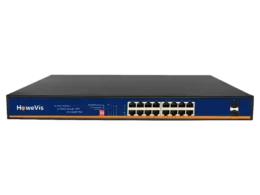
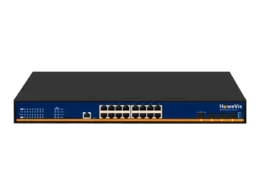

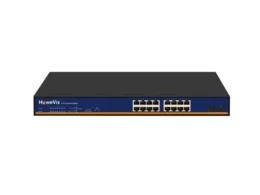
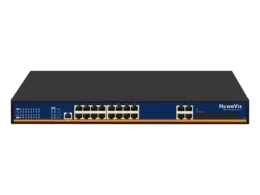
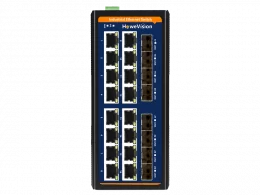
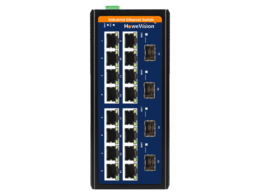



1 thought on “Discover the best 16 ports Ethernet Switch switches: Gigabit, Managed & More – Top Picks!”
I have been browsing online more than three hours today yet I never found any interesting article like yours It is pretty worth enough for me In my view if all website owners and bloggers made good content as you did the internet will be a lot more useful than ever before
Comments are closed.